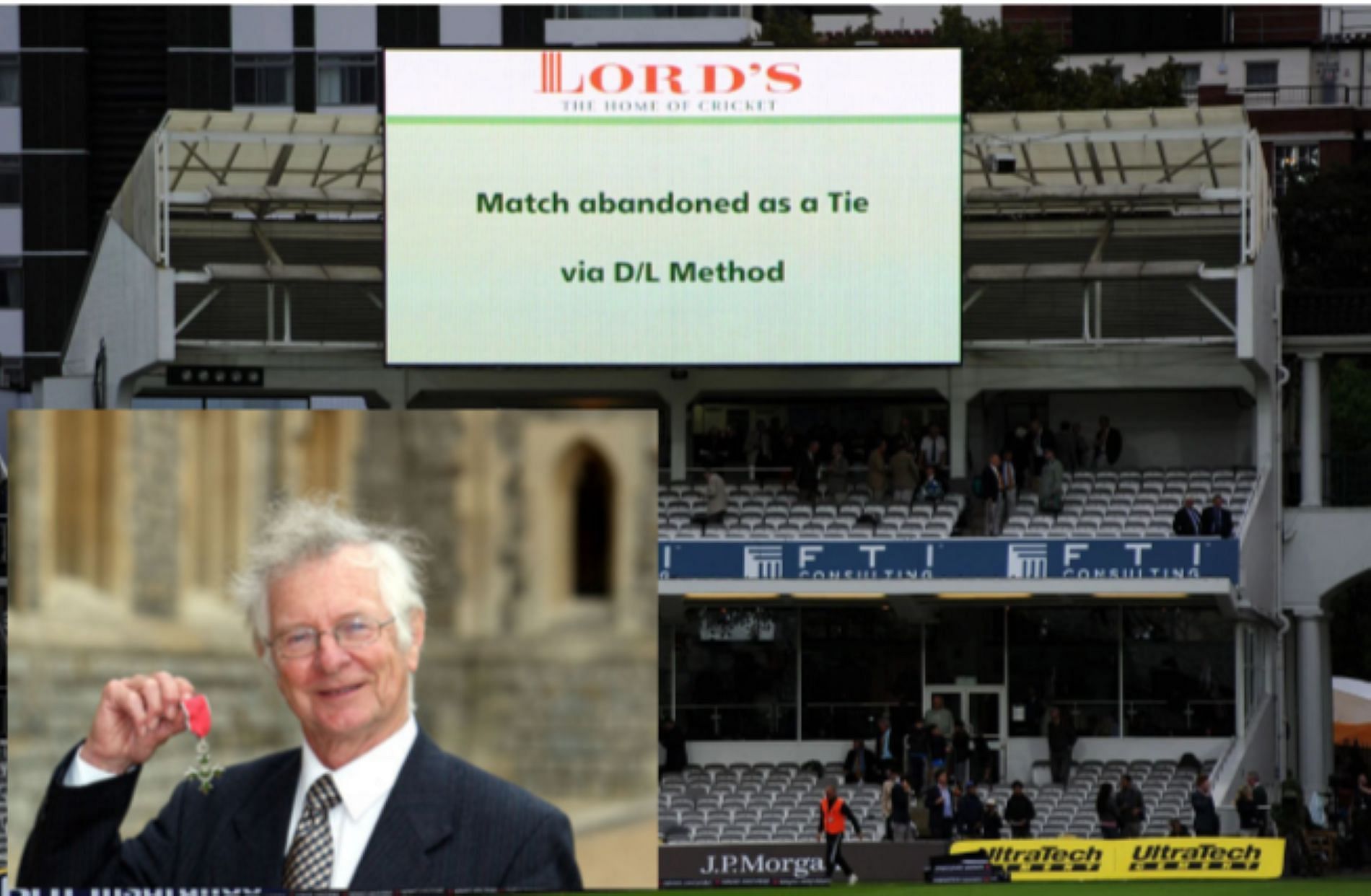
Frank Duckworth, co-founder of the DLS method, dies at 84
Frank Duckworth, who co-invented the Duckworth-Lewis (D/L) method to calculate scores at different stages in a run-chase and determine results in rain-affected games, died at 84 on Friday, June 21. The cause of his death is not known yet.
The D/L method came into existence in 1997, replacing the erstwhile rain rule in international cricket. It was formally used by the ICC for rain-shortened games from 2001.
However, modifications by Australian statistician Steven Stern had it renamed to the Duckworth-Lewis-Stern (DLS) method following the retirement of Duckworth and Lewis.
Despite the odd criticism, the D/L method was a welcome change from the original rain rule that was exposed during the infamous South Africa-England 1992 World Cup semi-final.
South Africa also suffered the effects of the D/L rule in the 2003 ODI World Cup. They failed to read the correct required target after 45 overs and inadvertently achieved the score to tie instead.
It led to them being eliminated from the home World Cup before the Super Six stage.
The DLS method was used in the most recent BAN-AFG clash of 2024 T20 World Cup
The DLS method came into the equation several times during the latest 2024 T20 World Cup encounter between Bangladesh and Afghanistan. With a semi-final spot on the line, Afghanistan scored 115/5 in 20 overs.
Bangladesh were 81/7 after 11.4 overs and two runs behind as per the DLS method when the players went off the field. To delay proceedings and ensure a ball wasn't bowled for Bangladesh to potentially go ahead on the DLS score, Afghan all-rounder Gulbadin even went down with a controversial injury.
When play resumed, both teams kept an eye on the DLS score after each over in case of further interruptions. Bangladesh's target was also revised to 114 in 19 overs by the DLS method.
Eventually, Afghanistan bowled Bangladesh out for 105 to win the match by eight runs and book their place in the semi-final.